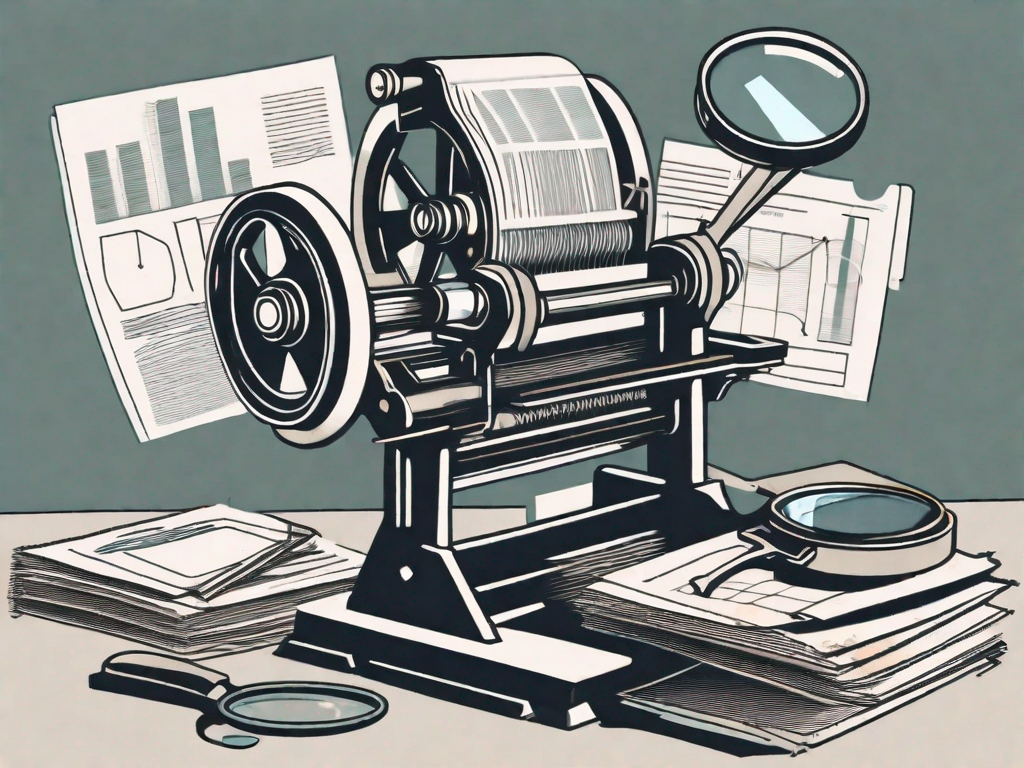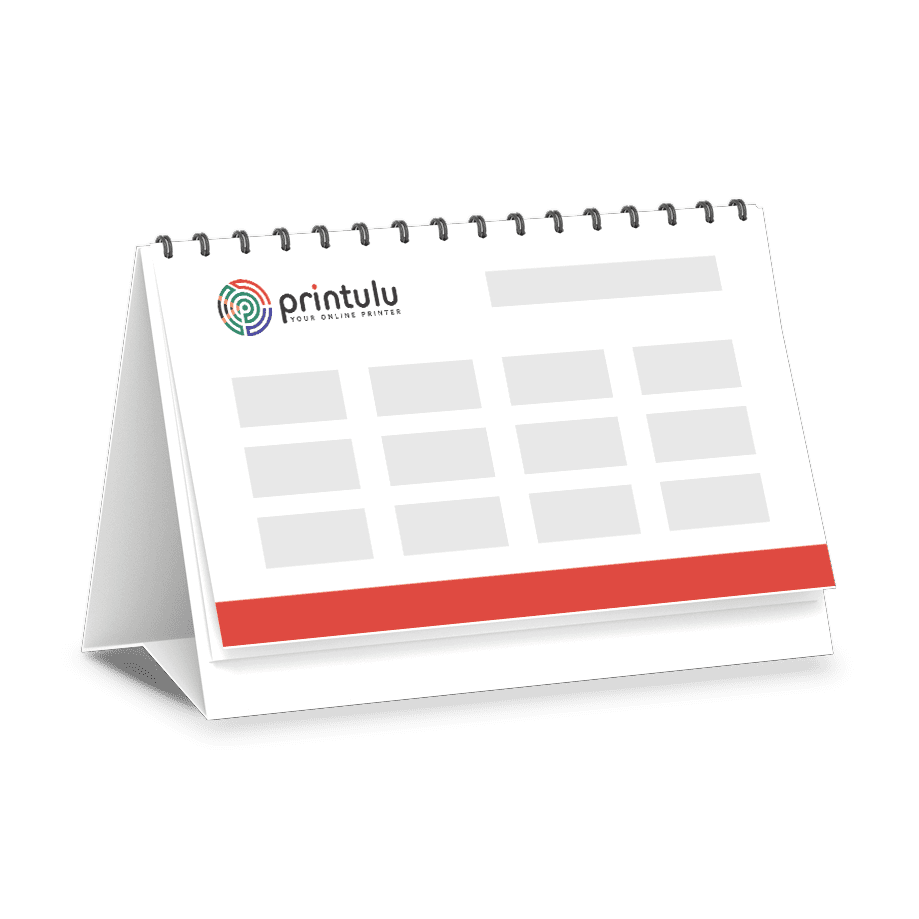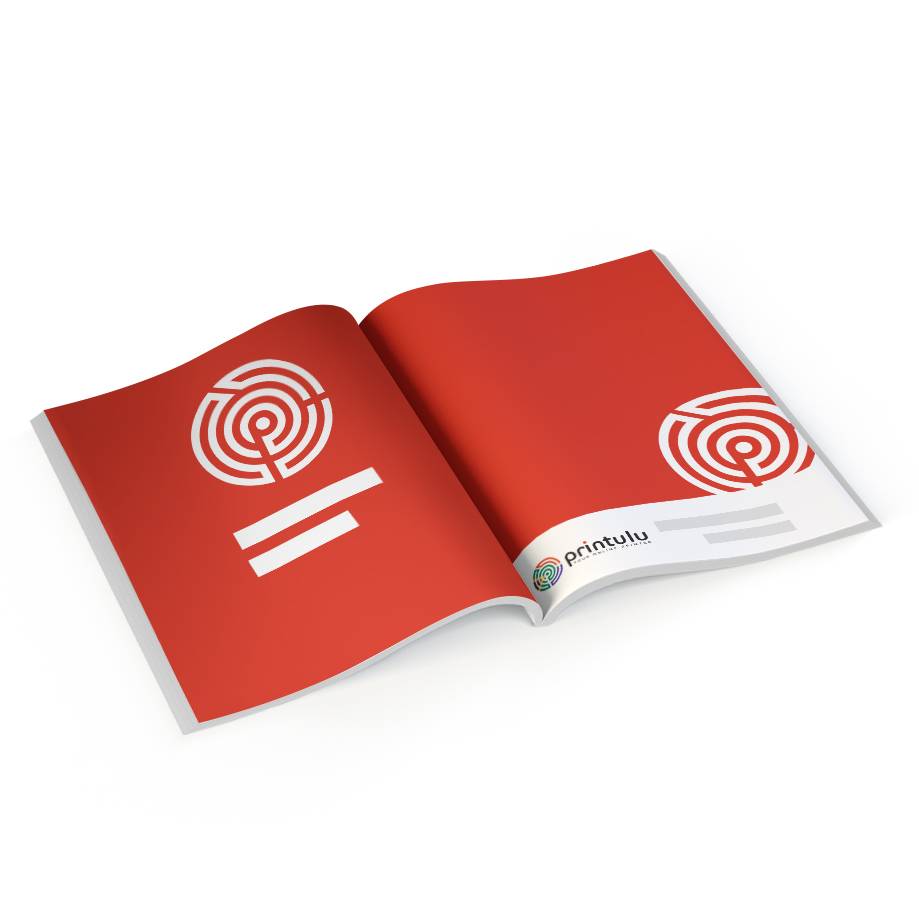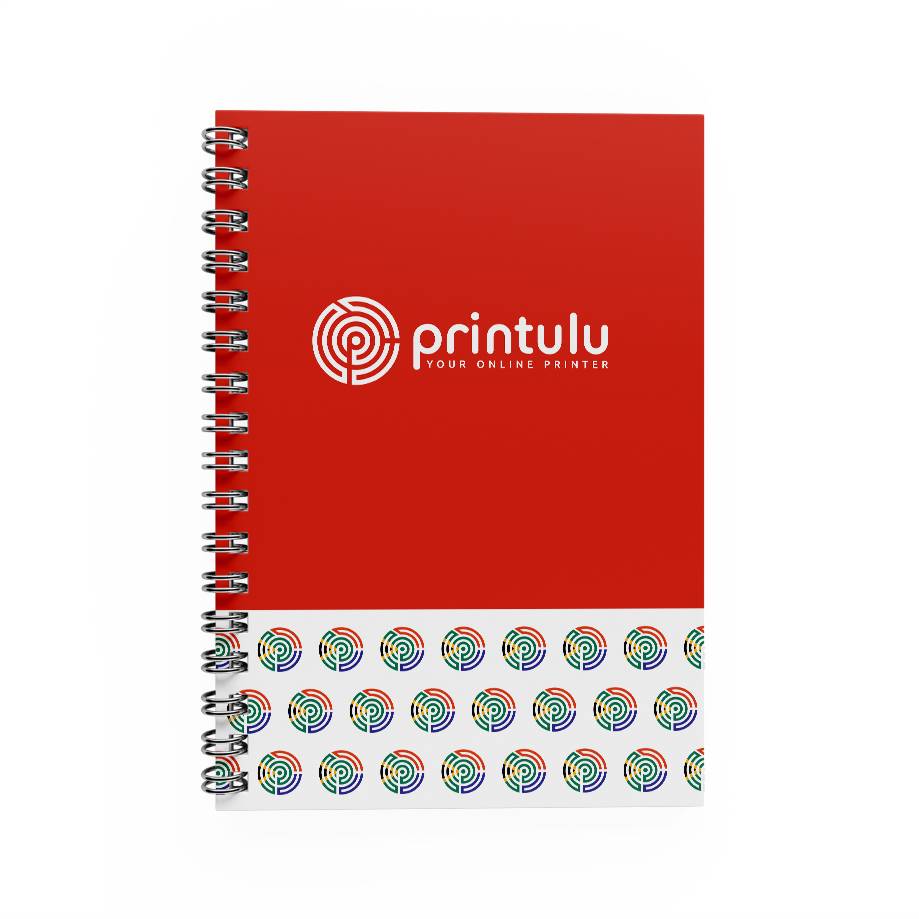It’s that time of the year again. The activities and events of the previous year are still fresh in your mind, the direction for the new year is finalised and in execution, and your financial year end is around the corner. Designing and printing an annual report is not something most people look forward to.

Traditionally annual reports are technical documents that contain detail on your company’s activities and financial performance for the financial year. Perceived more as a regulatory requirement than promotional material, they may often materialise as bland reading often created to be seen and not read.
That does not have to be the case. That’s because as we have just launched PUR Bound Booklets online at our well-known affordable prices. That means more budget available for you to get a stellar design that can create an annual report that has:
- Data and information that is easy to consume and internalise.
- A rich format that tells the story of your company and people.
- A platform to maximise the impact of your brand.
While the audience for these reports is shareholders and other stakeholders who have a keen interest in the company’s financials, there’s no reason why they can’t be created to delight this intended audience and to appeal to a wider audience such as clients, staff and suppliers.
Just have a look at some of the inspirational designs here!
With all of this in mind, let’s unpack some key elements.

Simplify Data Interpretation with These Must-Have Tools
Interpreting large amounts of data can be overwhelming, but with the right tools, it can become a breeze. Storydoc is a powerful data analysis software that helps streamline the process. From crunching numbers to generating insightful visualisations, this tool provides a comprehensive solution for understanding complex data sets.
Imagine you are working on a project that involves analyzing customer feedback data from a recent survey. The data consists of thousands of responses, each containing valuable insights. Without the right tools, making sense of this vast amount of information would be a daunting task.
This is where Tool Storydoc comes to the rescue. With its advanced algorithms and user-friendly interface, it allows you to efficiently analyse the data, identify patterns, and extract meaningful conclusions. Whether you need to calculate statistical measures, perform regression analysis, or create data models, Storydoc has got you covered.
But data analysis is only half the battle. Communicating your findings effectively is equally important. This is where Venngage steps in. While Storydoc focuses on the analytical aspect, Venngage specialises in enhancing data visualisation.
Imagine you have successfully analysed the customer feedback data and uncovered some interesting trends. Now, you need to present your findings to the management team in a way that is easy to understand and visually appealing. This is where Venngage shines.
With its array of customisable charts and graphs, it allows you to present data in a visually appealing format. You can choose from various chart types such as bar charts, line graphs, pie charts, and scatter plots, depending on the nature of your data. These engaging visuals not only capture attention but also make it easier for stakeholders to grasp key insights at a glance.
For example, you can create a bar chart to compare customer satisfaction ratings across different product categories. This visual representation instantly highlights which categories are performing well and which ones need improvement. With this information, the management team can make informed decisions and take necessary actions to enhance customer satisfaction.
Moreover, Venngage allows you to customise the appearance of your visualisations to match your brand’s aesthetics. You can choose different colour schemes, fonts, and styles to create a consistent and professional look. This attention to detail adds an extra layer of polish to your presentations and helps you make a lasting impression.
Here are some key infographic pointers to use for Annual report Printing:
- Keep it simple – Think of the main message you want to communicate with the infographic and focus solely on that.
- It should not be small icons accompanied by long copy – the visuals should always outweigh the text.
- Repurpose it – you now have an appealing visual that can be used in other mediums to deliver the same message.
- Use the whole page – this is a high-impact visual, give it enough space to achieve that impact.
- Use white space – use enough blank space to give your visuals enough room to be noticed.
- Give it a logical flow – the infographic should tell a story from top to bottom and/or side to side, but it does not necessarily have to be linear.
In conclusion, when it comes to simplifying data interpretation, having the right tools is crucial. Storydoc helps you analyse complex data sets efficiently, while Venngage enhances data visualisation and presentation. By leveraging these must-have tools, you can unlock valuable insights and effectively communicate your findings to drive informed decision-making.

Crafting a Compelling Company Narrative
Annual reports aren’t just a compilation of financial figures; they’re an opportunity to tell your company’s story. By captivating your audience with a compelling narrative, you can create a stronger connection and build trust. Start by outlining the journey your company has taken over the past year, highlighting key milestones and achievements. This helps stakeholders understand the context behind the numbers, making the report more relatable and engaging.
Showcasing your brand’s unique identity is another crucial aspect of crafting your company narrative. Use language and visuals that align with your brand’s personality and values. This not only strengthens brand recognition but also gives stakeholders a sense of the authentic identity your company embodies.
Imagine a company that started as a small family business in a quaint English village. Over the years, this company grew steadily, expanding its reach and impact. The annual report serves as a window into this remarkable journey, allowing stakeholders to witness the transformation and growth.
One of the key milestones achieved by the company in the past year was the successful launch of a new product line. This innovative range of products not only met the needs of the market but also showcased the company’s commitment to continuous improvement and customer satisfaction. The annual report provides an opportunity to delve into the development process, highlighting the research, design, and testing that went into creating these cutting-edge products.
But it’s not just about the numbers and achievements; it’s about the people behind the success. The annual report introduces stakeholders to the dedicated team that works tirelessly to bring the company’s vision to life. From the skilled craftsmen who meticulously create each product to the passionate customer service representatives who ensure customer satisfaction, the report shines a spotlight on the individuals who make it all possible.
Furthermore, the report delves into the company’s commitment to sustainability and social responsibility. It showcases the initiatives taken to reduce the company’s carbon footprint, such as implementing energy-efficient practices and sourcing materials from sustainable suppliers. By sharing these efforts, the report demonstrates the company’s dedication to making a positive impact on the environment and the community.
Language and visuals play a vital role in conveying the company’s unique identity. The report embraces the company’s British heritage, incorporating elements of British culture and traditions. From the use of British English in the text to the inclusion of images depicting iconic British landmarks, the report immerses stakeholders in the company’s rich heritage and values.
By crafting a compelling company narrative, the annual report becomes more than just a financial document. It becomes a story, a journey, and a testament to the company’s resilience, innovation, and commitment to excellence. Through relatable and engaging storytelling, the report establishes a deeper connection with stakeholders, fostering trust and loyalty.
Mastering the Art of Professional Journalism
When it comes to writing an annual report, adopting a journalistic approach can make a world of difference. Unleash your inner journalist by gathering all the necessary information, conducting interviews, and asking the right questions. This enables you to present a well-rounded and comprehensive report that goes beyond just numbers.
Writing for impact means engaging your readers from the start. Begin with a powerful opening that hooks their attention and encourages them to delve deeper. Use concise and clear language, avoiding jargon and technical terms that might alienate stakeholders. Break down complex concepts into digestible chunks, and provide examples and real-life stories to illustrate your points.
Imagine you are a journalist reporting on a groundbreaking scientific discovery. You have the opportunity to interview the leading scientist behind the research and gain exclusive insights into their work. By approaching your annual report with the same level of curiosity and dedication, you can create a captivating narrative that captures the essence of your organization’s achievements.
One effective technique used by journalists is to ask open-ended questions that encourage interviewees to provide detailed and insightful responses. By incorporating this approach into your research process, you can uncover valuable information that adds depth and credibility to your annual report. Remember, the more you dig, the more you will discover.
Another aspect of professional journalism is the art of storytelling. Journalists are skilled in crafting narratives that resonate with their audience, evoking emotions and sparking interest. Apply this storytelling technique to your annual report by highlighting the human element behind the numbers. Share success stories of individuals whose lives have been positively impacted by your organization’s work, creating a connection between your stakeholders and the impact of your efforts.
Furthermore, journalists are trained to present information in a clear and concise manner. They understand the importance of avoiding jargon and technical terms that may confuse or alienate their readers. Take a leaf out of their book and ensure your annual report is accessible to a wide range of stakeholders. Break down complex concepts into easily understandable language, providing clear explanations and examples to support your points.
Just like a journalist, you have the power to shape the narrative of your annual report. Consider the structure and flow of your report, ensuring it follows a logical sequence that guides your readers through the information. Use headings and subheadings to create a sense of organization and make it easier for your audience to navigate the content.
Lastly, don’t forget the power of visuals. Journalists often incorporate photographs, infographics, and charts to enhance their storytelling. Similarly, you can use visual elements in your annual report to engage your readers and convey information in a visually appealing way. Whether it’s through striking images or informative graphs, visuals can help bring your report to life and leave a lasting impression.
Putting Yourself in Your Reader’s Shoes
To create an impactful annual report, you need to understand your audience’s perspective. Put yourself in their shoes and consider what information they find most valuable. Tailor your report to meet their needs and address their concerns. Conduct surveys, gather feedback, and use analytics to gain insights into what your stakeholders expect from the report.
Creating content that resonates with your audience is key to making a lasting impression. Incorporate stories of how your company has impacted people’s lives or contributed to the community. Highlight the positive changes you’ve made while acknowledging challenges faced along the way. This approach not only showcases your achievements but also demonstrates transparency and authenticity.
Imagine yourself as a stakeholder eagerly awaiting the release of the annual report. You are curious about the company’s performance, its impact on society, and its plans for the future. As you open the report, you are greeted with a well-structured document that immediately captures your attention.
The first section of the report provides a comprehensive overview of the company’s financial performance. It includes detailed graphs and charts that visually represent the data, making it easier for you to grasp the key figures. The report goes beyond mere numbers and explains the factors that influenced the financial results, giving you a deeper understanding of the company’s operations.
As you continue reading, you come across a section dedicated to the company’s social impact. Here, you find heartwarming stories of individuals whose lives have been positively transformed by the company’s initiatives. You learn about the educational programs it has supported, the environmental projects it has undertaken, and the partnerships it has formed to create a better future for all.
Furthermore, the report acknowledges the challenges the company has faced along the way. It openly discusses the obstacles encountered, such as economic downturns or regulatory changes, and explains how the company has navigated through them. This level of transparency instills confidence in you as a stakeholder, knowing that the company is not afraid to address both its successes and its setbacks.
Another section of the report focuses on the company’s future plans and strategies. It outlines the goals it aims to achieve in the coming years and provides a clear roadmap for how it intends to get there. This forward-thinking approach reassures you that the company is proactive and has a long-term vision in place.
Throughout the report, you notice that the language used is concise and accessible. Complex financial terms are explained in simple terms, ensuring that all stakeholders can easily comprehend the information presented. The report strikes a balance between being informative and engaging, making it an enjoyable read.
As you reach the end of the report, you are left with a sense of admiration for the company’s achievements and a deeper understanding of its values and mission. The report has successfully fulfilled its purpose of informing and engaging its audience, leaving a lasting impression in your mind.
By putting yourself in your reader’s shoes and considering their needs and expectations, you can create an annual report that goes beyond being a mere document. It becomes a powerful tool that connects with stakeholders, builds trust, and showcases the impact your company has made. So, take the time to understand your audience, incorporate compelling stories, and present your information in a clear and engaging manner. Your efforts will be rewarded with a report that truly resonates with your readers.
Key Takeaways for Annual Report Printing
An annual report is a unique opportunity to showcase your company’s progress and potential. By implementing the right tools, crafting a compelling narrative, and adopting a journalistic approach, you can create an annual report that captivates stakeholders and leaves a lasting impact. Remember to prioritise understanding your audience and create content that resonates. With these key takeaways, you’re well on your way to producing an exceptional annual report that stands out from the competition.
When it comes to creating an annual report, it’s important to go beyond the numbers and financial data. While these aspects are crucial in demonstrating your company’s performance, it’s equally important to tell a story that engages and inspires your stakeholders. By weaving together narratives of success, challenges, and future goals, you can create a report that not only informs but also captivates the reader.
One effective way to make your annual report more engaging is by adopting a journalistic approach. This means conducting interviews with key stakeholders, employees, and customers to gather firsthand insights and experiences. By incorporating these personal stories into your report, you can humanize your company’s achievements and create a deeper connection with your audience.
Another key aspect to consider is understanding your audience. Your annual report should be tailored to the specific needs and interests of your stakeholders. Are they primarily interested in your financial performance? Or are they more concerned about your company’s sustainability efforts? By conducting thorough research and analysis, you can ensure that your report addresses the topics that matter most to your audience.
Furthermore, it’s essential to utilize the right tools and design elements to enhance the visual appeal of your annual report. Incorporating infographics, charts, and graphs can help present complex data in a more digestible format. Additionally, using high-quality images and engaging layouts can make your report visually appealing and encourage readers to dive deeper into the content.
Lastly, don’t forget to celebrate your achievements and milestones. An annual report is not just a document to showcase your company’s performance; it’s also an opportunity to recognise the hard work and dedication of your employees. By highlighting key accomplishments and milestones, you can instill a sense of pride and motivation within your team while also impressing your stakeholders.

Represent your brand at its All Time Best
The potential reach of the report and the longevity of its existence makes it almost as important as your brand CI. Here are a few things to bear in mind.
Typography
Use typographic hierarchy to give a clear sense of the structure of a page (primary headings and subheadings) and pay attention to the fonts in your brand CI.
Use vertical spacing to make your words easier to scan. This is the line spacing between sentences and the spacing between paragraphs. Focus on giving enough space so the reader’s eye and brain can more easily decipher characters, words, and word shapes.
Adjust the measure to make each line of text more comfortable to read. This is the length of a line of text. Long lines don’t look pleasant to read, but shorter lines are more welcoming. The ideal number of characters per line is 65–75. Use the width of the body text rather than headings or sub-headings to define this length.
A great, yet unconventional, idea is to use wide margins that provide readers with space for taking notes. Space creates that room that makes the report easier to read.
[Related: Is your typography print ready?]
In conclusion, exceptional annual report printing requires a combination of storytelling, journalistic approach, audience understanding, visual appeal, and celebration of achievements. By following these key takeaways, you can produce a report that not only impresses your stakeholders but also sets your company apart from the competition.
Expert Tips for Effective Tailoring of Your Annual Report Message to Your Target Audience
In today’s competitive business landscape, it’s essential to communicate effectively with your target audience. This holds especially true when it comes to your annual report message. A well-crafted and tailored message can captivate your readers, leaving a lasting impression that resonates with them. To help you achieve this, we’ve compiled some expert tips to guide you in tailoring your annual report message to your specific target audience.
Tailoring Your Message for Your Target Audience
When it comes to effective communication, understanding your audience’s needs and preferences is key. Take the time to research and analyze your target market, gaining valuable insights into their interests, goals, and challenges.
By delving deep into their world, you can customize your message to address their pain points and provide relevant solutions. This personalization creates a connection between your brand and your audience, making them more receptive to your message.
Understanding your audience’s needs and preferences is crucial for successful communication. It allows you to speak directly to their motivations, fears, and aspirations, creating a sense of identification and trust. To gain a better understanding of your target audience, consider conducting market research or creating customer personas. These personas can help you visualize and empathize with your readers, allowing you to address their unique challenges and desires.
Crafting messages that resonate with your target market is essential. To achieve this, tell stories that evoke emotion and connect with their experiences. By demonstrating that you understand their journey, you establish a strong bond and increase their engagement with your brand.
Moreover, it is important to speak your audience’s language. Use terminology and tone that aligns with their preferences and values. This linguistic alignment will make your message more relatable and compelling to your readers, ensuring that your annual report delivers its intended impact.
Understanding Your Audience’s Needs and Preferences
Before crafting your annual report message, delve into your audience’s needs and preferences. Identify their motivations, fears, and aspirations. This understanding will enable you to tailor your message to speak directly to these points, building a sense of identification and trust.
Consider conducting market research or creating customer personas to gain a better understanding of your target audience. These personas can help you visualize and empathize with your readers, allowing you to address their unique challenges and desires.
Understanding your audience’s needs and preferences is crucial for successful communication. It allows you to speak directly to their motivations, fears, and aspirations, creating a sense of identification and trust. To gain a better understanding of your target audience, consider conducting market research or creating customer personas. These personas can help you visualize and empathize with your readers, allowing you to address their unique challenges and desires.
Crafting Messages That Resonate with Your Target Market
Once you have a deep understanding of your audience, craft messages that resonate with them on a personal level. Tell stories that evoke emotion and connect with their experiences. By demonstrating that you understand their journey, you establish a strong bond and increase their engagement with your brand.
Additionally, speak their language. Use terminology and tone that aligns with their preferences and values. This linguistic alignment will make your message more relatable and compelling to your readers, ensuring that your annual report delivers its intended impact.
Crafting messages that resonate with your target market is essential. To achieve this, tell stories that evoke emotion and connect with their experiences. By demonstrating that you understand their journey, you establish a strong bond and increase their engagement with your brand.
Moreover, it is important to speak your audience’s language. Use terminology and tone that aligns with their preferences and values. This linguistic alignment will make your message more relatable and compelling to your readers, ensuring that your annual report delivers its intended impact.
Crafting Clear and Concise Communication
In today’s fast-paced world, brevity is paramount. Capturing your reader’s attention and conveying your message efficiently is vital to grab and hold their interest. Avoid being overly verbose or including unnecessary jargon that might confuse your readers.
Focus on getting your point across succinctly and clearly. Break your annual report message into digestible sections and paragraphs, making it easy to skim and absorb. Use bullet points or numbered lists to highlight key information, enabling your audience to quickly grasp the main points.
When crafting clear and concise communication, it is essential to consider the power of brevity. By getting your point across efficiently, you increase the chances of your message being understood and remembered.
When writing your annual report, aim to be concise. Emphasize the most critical details and provide relevant examples that support your overall message. Keep your sentences clean and impactful, eliminating unnecessary words or lengthy descriptions.
Remember, your audience has limited time and attention. By being brief and to the point, you enhance the chances of your message being absorbed and remembered long after your report is read.
Furthermore, simplifying your message can significantly impact its effectiveness. Complexity can hinder effective communication, so it is crucial to break down complex concepts into easy-to-understand language. By using everyday examples and analogies, you can guide your readers through intricate information with ease.
Additionally, visual aids such as graphs or charts can be highly effective in presenting complex data in a more accessible manner. By simplifying your message, you make it more approachable and increase the likelihood of your audience grasping and appreciating the information you are sharing.
In conclusion, crafting clear and concise communication is essential in today’s fast-paced world. By focusing on brevity, emphasizing critical details, and simplifying complex concepts, you can effectively convey your message and ensure maximum impact.
Essential Elements for Effective Communication
When crafting your annual report message, certain essential elements are instrumental in capturing and retaining your reader’s attention. These elements ensure that your message is not only clear but also engaging and memorable.
Effective communication is a cornerstone of any successful organization. It allows for the exchange of ideas, information, and emotions, fostering understanding and collaboration. In the context of an annual report, the importance of effective communication cannot be overstated. It is through this report that you have the opportunity to showcase your achievements, outline your goals, and communicate your vision to stakeholders.
One key component of effective communication is strong storytelling. Humans are naturally drawn to narratives, and a well-crafted story can captivate your audience, making your message more relatable and memorable. Consider incorporating anecdotes, case studies, or personal experiences that highlight the impact of your organization’s work.
The Key Components of a Successful Communication Strategy
A successful communication strategy involves more than just relaying information. It requires a cohesive approach that considers various elements, such as strong storytelling, visual appeal, and a clear call to action.
Visual appeal plays a crucial role in capturing and retaining your reader’s attention. Utilize design elements that are visually appealing and aligned with your organization’s brand identity. This includes choosing an appropriate color palette, using high-quality images, and employing consistent typography. Remember, a visually appealing report is more likely to be read and remembered.
Another important component of a successful communication strategy is a clear call to action. What do you want your readers to do after reading your report? Whether it’s making a donation, attending an event, or spreading the word about your organization, clearly articulate the desired action and provide the necessary information for your readers to take that next step.
Craft a well-defined structure for your annual report, ensuring it flows logically from one section to the next. Create a narrative that seamlessly guides your reader through the content, keeping them engaged and interested. Consider using headings, subheadings, and bullet points to break up the text and make it easier to digest.
Must-Have Elements for Clear and Engaging Content
When it comes to clear and engaging content, certain elements are vital. These include a compelling introduction that grabs attention, a coherent structure that leads the reader through your report, and a memorable conclusion that leaves a lasting impression.
An attention-grabbing introduction sets the tone for your entire report. Consider starting with a thought-provoking statistic, a powerful quote, or a compelling anecdote that immediately captures your reader’s interest. This will encourage them to continue reading and engage with the rest of your content.
Additionally, incorporate images, infographics, or other visual elements to enhance the attractiveness and readability of your report. These visuals can illustrate your data, break up blocks of text, and make your content more visually appealing. Remember to ensure that the visuals are relevant, high-quality, and accessible to all readers.
A memorable conclusion is essential for leaving a lasting impression on your readers. Summarize the key points of your report and reiterate your main message. Consider ending with a call to action that motivates your readers to take the desired steps, whether it’s supporting your cause, joining your organization, or advocating for your mission.
Remember, effective communication is an ongoing process. Continuously evaluate and refine your communication strategy to ensure that it aligns with your organization’s goals and resonates with your target audience. By incorporating these essential elements into your annual report, you can create a communication piece that is not only informative but also engaging and memorable.
Adding a Personal Touch with Storytelling
Storytelling is a powerful tool that can add a personal touch to your annual report message. By weaving narratives into your content, you humanize your brand and connect with your audience on a deeper level.
But how exactly can you incorporate storytelling into your annual report? Let’s dive into some strategies that will help you make your report more engaging and memorable.
Connecting with Your Audience Through Personal Anecdotes
Incorporate personal anecdotes that highlight your brand’s values and accomplishments. Share stories that showcase how your company’s work has positively impacted individuals or communities. This personal connection builds trust and empathy, fostering a stronger bond with your readers.
For example, you can share a story about how your company’s sustainable practices have helped a local community thrive. Describe the positive changes that have occurred as a result of your efforts, such as cleaner air, healthier ecosystems, and improved quality of life for the residents.
Remember to keep your anecdotes concise and relevant, ensuring they serve to reinforce your main message rather than distract from it. Use them strategically throughout your report to maintain interest and emotional engagement.
The Art of Storytelling: Engaging Your Readers on a Deeper Level
Effective storytelling involves more than just sharing anecdotes. It requires careful consideration of narrative structure, character development, and pacing. Craft compelling narratives that captivate your readers, drawing them deeper into your report and enhancing their understanding of your message.
One way to engage your readers is by creating relatable characters. Introduce individuals who have been positively impacted by your company’s initiatives. Share their personal experiences and the challenges they faced before your intervention. By doing so, you create a connection between your readers and these characters, making your report more relatable and emotionally resonant.
Consider the storytelling techniques used in literature or film to create engaging narratives. Introduce conflicts, build tension, and resolve them with actionable solutions. For instance, you can describe a situation where your company faced a significant obstacle in achieving its goals. Explain how your team overcame the challenge through innovative thinking and collaboration, ultimately leading to a successful outcome.
By immersing your audience in a captivating story, you ensure that your annual report message leaves a lasting impact. The power of storytelling lies in its ability to evoke emotions, inspire action, and create a memorable experience for your readers.
Enhancing Communication with Visual Elements
Visual elements play a critical role in enhancing communication. When used effectively, images and other visual aids can amplify your annual report message, making it more engaging and memorable.
The Impact of Visuals: Using Images to Amplify Your Message
Incorporating relevant images into your annual report can deepen your reader’s understanding and emotional connection to your message. Use visuals to emphasize key data points, illustrate concepts, and evoke feelings that resonate with your target audience.
For example, imagine you are creating an annual report for a wildlife conservation organization. By including high-resolution images of endangered species in their natural habitats, you can visually communicate the urgency and importance of their work. These images can evoke emotions such as empathy and concern, encouraging readers to support the cause.
Infographics or charts can be particularly effective in presenting complex information in a visually appealing way. These visuals provide a quick overview while also allowing readers to delve deeper into the details if desired.
Consider a scenario where you are preparing an annual report for a technology company. You can use infographics to showcase the growth of the company’s user base over the past year, highlighting the exponential increase in customers. By visually representing this data, you can convey the company’s success and market dominance in a compelling manner.
Remember to choose visuals that align with your brand’s aesthetic and voice. Consistency in your visual elements will reinforce your message and ensure a cohesive reading experience.
Now armed with these expert tips, you have the knowledge and tools to effectively tailor your annual report message to your target audience. By understanding their needs, crafting clear and concise communication, adding a personal touch with storytelling, and enhancing your message with visual elements, you can create a compelling and impactful report that resonates with your readers.
Furthermore, it is important to consider the cultural context of your audience when selecting visual elements. For instance, if you are creating an annual report for a global organization, you may need to choose images that are culturally inclusive and representative of the diverse communities you serve. This attention to detail will demonstrate your commitment to inclusivity and strengthen your connection with readers from different backgrounds.
With each annual report, refine your techniques and continue to adapt your message to meet the evolving needs of your audience. And remember, effective communication is not just about conveying information but also about creating a memorable and engaging experience.
Other resources:
- Best examples of beautiful annual report design
- How to Design a Killer Annual Report
- 6 tips to increase the usability of your charts
- Typography tips for a more comfortable read
- 12 Infographic Tips That You Wish You Knew Years Ago
Related Articles:
- A printer’s tips on flyer design, printing, and distribution
- A quick guide on your calendar design
- A quick guide to professional writing
- Is your typography print ready?
- Your Complete Business Stationery List (Checklist: Do You Have What You Need?)






